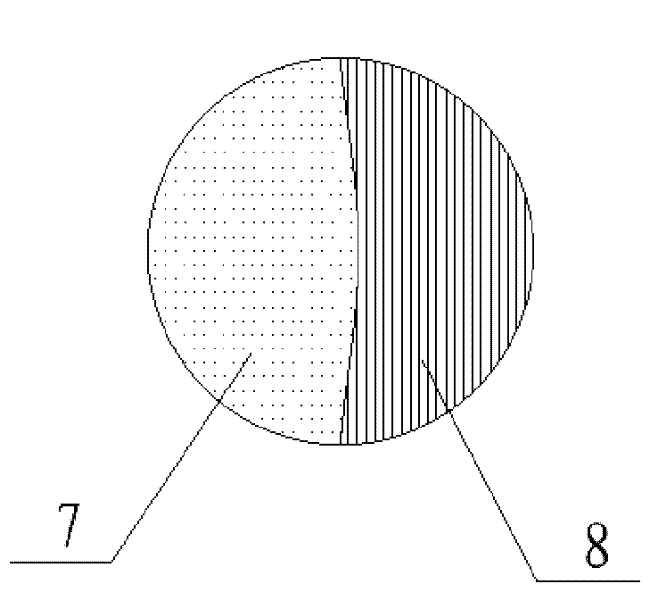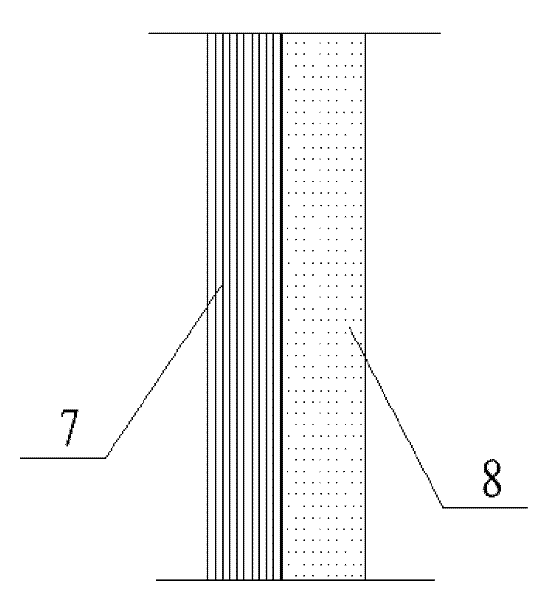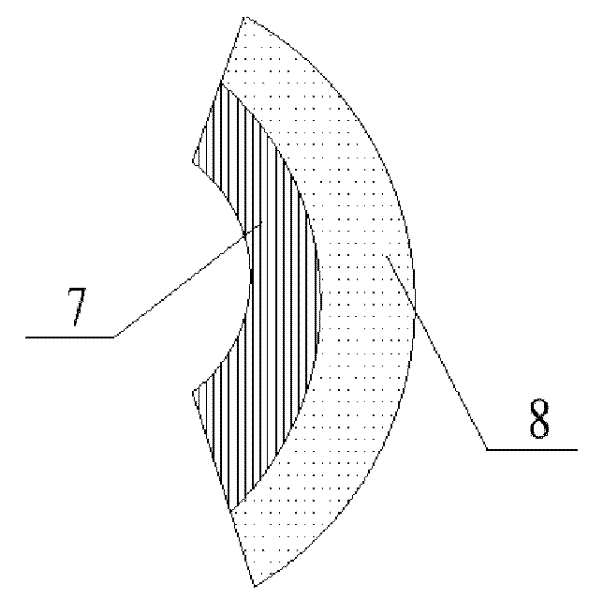Two-step production method for elastic nonwoven material
A non-woven material and stretchable technology, applied in the directions of non-woven fabrics, textiles and papermaking, fabric surface trimming, etc., to achieve the effects of good adhesion, simple production process and improved cosmetic effect
- Summary
- Abstract
- Description
- Claims
- Application Information
AI Technical Summary
Problems solved by technology
Method used
Image
Examples
Embodiment 1
[0029] Embodiment 1: produce 90g / m 2 stretchable material
[0030] The first step of the spunlace nonwoven process to produce the substrate has the following steps:
[0031] Choose a polyester differential fiber with a fineness of 2 deniers and a length of 51 mm and a cross-section composed of two types of fibers (the fiber supplier is Japan Toyobo Industry Co., Ltd., model msw5730), and add 20% polyester differential fiber Weight of 2D*51mm fiber; use two bale opening machines to feed polyester differential fiber and polyester fiber in proportion respectively, and then go through two openings, multi-bin cotton blending, cross-laying, drafting, drum drying, hot air Spunlace nonwoven process of through-drying and functional finishing, apply antistatic oil and water at the opening or mixing place according to 8% of the total fiber weight, and the antistatic agent mixture consists of 3% antistatic agent and 97% water Composition to improve fiber carding. The main process of th...
Embodiment 2
[0037] Embodiment 2: produce 110g / m 2 The product
[0038] The first step of the spunlace nonwoven process to produce the substrate has the following steps:
[0039] Choose a polyester differential fiber with a fineness of 2 deniers and a length of 51 mm and a cross-section composed of two types of fibers (the fiber supplier is Japan Toyobo Industry Co., Ltd., model msw5730), and add 15% polyester differential fiber The weight of 2D*51mm polyester fiber; two bale opening machines are used to feed the polyester differential fiber and polyester fiber in proportion, and then go through two openings, multi-bin cotton blending, cross-laying, drafting, drum drying and The spunlace nonwoven process of hot air penetration drying, antistatic oil and water is applied at the opening or mixing place according to 10% of the total fiber weight, and the antistatic agent mixture is composed of 2% antistatic agent and 98% water. To improve the carding effect of fibers.
[0040] The main tec...
PUM
| Property | Measurement | Unit |
|---|---|---|
| length | aaaaa | aaaaa |
| Basis weight | aaaaa | aaaaa |
| Basis weight | aaaaa | aaaaa |
Abstract
Description
Claims
Application Information
 Login to View More
Login to View More - R&D
- Intellectual Property
- Life Sciences
- Materials
- Tech Scout
- Unparalleled Data Quality
- Higher Quality Content
- 60% Fewer Hallucinations
Browse by: Latest US Patents, China's latest patents, Technical Efficacy Thesaurus, Application Domain, Technology Topic, Popular Technical Reports.
© 2025 PatSnap. All rights reserved.Legal|Privacy policy|Modern Slavery Act Transparency Statement|Sitemap|About US| Contact US: help@patsnap.com



